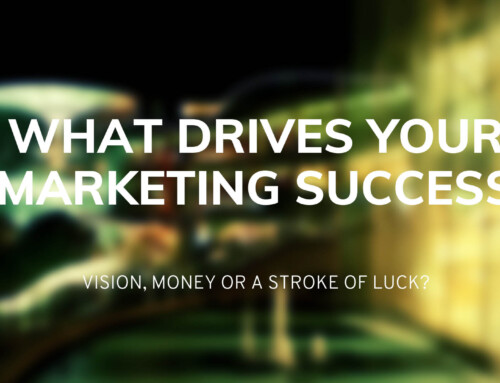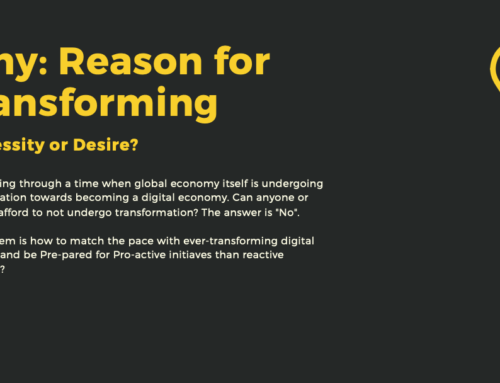 One word, apart from Trending, that we often come across these days is “Launch”. One way or another, the word touches every one of us. A new smart phone or a hedge fund or a space ship or an IRBM, everyone is about to launch a thing or two. And the ones who aren’t, they are waiting for these launches to happen. Technology touches most number of lives and all most all launches happen around technology itself. But then, it isn’t something that we do every day. What we don’t realize is that launching isn’t a cake walk and that there goes a meticulous planning behind the same. The same word, Launching, is just a small part of Go-To-Market (GTM) planning/strategy. The same GTM which is an integration of various things and yet, it’s not as challenging as rocket science 🙂
One word, apart from Trending, that we often come across these days is “Launch”. One way or another, the word touches every one of us. A new smart phone or a hedge fund or a space ship or an IRBM, everyone is about to launch a thing or two. And the ones who aren’t, they are waiting for these launches to happen. Technology touches most number of lives and all most all launches happen around technology itself. But then, it isn’t something that we do every day. What we don’t realize is that launching isn’t a cake walk and that there goes a meticulous planning behind the same. The same word, Launching, is just a small part of Go-To-Market (GTM) planning/strategy. The same GTM which is an integration of various things and yet, it’s not as challenging as rocket science 🙂
In simple terms and honestly speaking, you just need to LIE (Launch-Introduce-Execute) to create a successful go-to-market process. As rightly said by Rick McPartlin, the CEO of The Revenue Game,
You can’t launch a product until it is integrated into an offer.
When you go-to-market, you have to pick a side of the buyer’s BellCurve. Your choices are Brain side (launch) or Stuff side (introducing). Brain and Stuff are defined by the buyer’s understanding of the seller’s offer.
So, what are the myths and facts that follow a go-to-market process? Let’s hear it in Rick’s word
Myth: A new product can be launched into the market
Fact: Any product can’t be launched and sold until it is transitioned into an offer. The offer covers the whole buyer experience (value, price, distribution, services, warranty, etc). Also, you can’t launch into a market. Markets represent a group of buyers who are proactively looking to buy, and since a launch is about something new (that they have never heard of), they can’t be proactively looking to buy it.
Myth: It is important to price new products low to get the product (offer) into the market or, better yet, give the new product (offer) to a big name user for the reference.
Fact: The launch is about the seller being very clear about solving a customer problem that no one else is solving or has ever been solved. In solving this problem, the seller is selling their brain (knowledge) as part of the offer. The buyer does not know how this new approach to the problem will work and will only feel safe enough to acquire this offer if the seller’s brain is a major part of the offer in the form of intellectual property like design, training, consulting, installation, integration or ongoing support. If the offer does not demonstrate the brain as part of the offer and that the fee for the brain is large enough to assure the brain will be available every time the buyer needs it to get the expected outcome, the buyer will not take the risk of acquiring this new offer. The buyer wants to be very comfortable that, in partnership with the seller, the buyer can get from where they are today to the promised land of the offer.
The fee for a brain offer should be 10 percent of the value of the problem solved. If the fee is more than 10 percent of the value of the problem, the risk ratio to the buyer will be too great. If the fee is less than 10 percent of the value, the buyer feels that there’s something wrong.
For a brain offer, the buyer wants to pay a LOT because they want to believe the value is GREAT, and the seller is engaged in the offer until everything meets or exceeds the buyer’s expectations.
Myth: The best channel to launch a new product is through commission-only sales reps.
Fact: Indirect channels in general and commission-only sales reps in particular get up every morning, look in the mirror, and ask just one question, “What can I do today to make the most money before dinner?”
Evangelizing a brain offer is NEVER the answer to the question for the person in the mirror. Indirect channels won’t do the long-term work required. They can’t be counted on to meet the seller’s schedule, and most importantly are not trusted by the buyer. Since the buyer is taking a lot of risk, they want the seller team totally committed to the process, and indirect channels don’t normally fit that definition.
Don’t confuse the launch of a brain offer with the introduction of a stuff offer. Both are part of the go-to-market and require execution but the supporting execution is as different as brain and stuff. Developing clarity about the difference between brain and stuff forms the basis for success.
We often come across entrepreneurs living by the syndrome “If I built it, they will come” and lacking the foresight for effectiveness and importance of the GTM strategy. Just building a car and hoping that it will sell itself isn’t a great idea. Even Ferrari and BMW, in spite of being a Brand, needs to work on GTM before launching the same in market. Though it’s not only the GTM that determines the success or failure of any business or product, but it definitely is an important cog-in-the-wheel.
As a start-up company you need to define your customer segment and how to gain an efficient access the segment in a cost-effective manner. You need to define and adopt the most suitable sales channel and while doing the focus should be on creating a healthy concoction of traditional channels, direct-indirect sales and strategic partnership, and modern technological innovations. Isn’t using, and imbibing a new technology brings a disruption in your overall approach? How? By lowering the cost of offering the product, bringing product customization and offering convenience of accessibility to the customer. The best example to support the effectiveness of including technology in your channel strategy could be Netflix. Sometimes all you need is a unique GTM process to differentiate your product offering and build successful organizations, as did the Netflix.
At this point of time, my dear reader, you can always talk about the resource and capital constraint that follows a typical start-up. Yes, it’s hard to do that but then there could be smart ways to do the same and the best example to follow is Mint. I remember reading a Blog about the GTM and Mint and would like to share the key points for you:
To throw certain perspective, Mint created waiting list of 20,000+ before the launch (!) and while they were blessed with all the media coverage (Digg/TC etc), focusing on target audience helped them create momentum for the product.
Here are a few things that Mint got it right:
- Clear Objective – The Company focused on building tool for people looking for personal finance.
- Target location – Mint realized that most of these users are reading personal finance blogs and started sponsoring these blogs. Helped them build relationship with the targeted audience.
- Blog – The team started personal finance blog and genuinely focused on building great/compelling content. They focused on a content rich site targeted towards young professionals. And the result? Within few months, they were number 1 blog in personal finance space and search referrals drove interest on the main site.
- Landing Pages: They had an extensive SEO strategy, and it scaled pretty well.
- Back links: Before the launch, they asked people to put the mint widget on their blogs (I want Mint), and collected numerous back links.
- Email (Marketing Channel) – The team ensured that the latest information on personal finance was relayed to email subscribers. “People loved the consumer advocacy of the email notifications (we told people when interest rates went up, etc.).”
Contests at Facebook and Twitter also helped them build the momentum, but what matters is that the company did not rely on media/bloggers for the traction (hope can never be a strategy). Instead, they went out and out, reached the target segment and delivered value.
Having said, and just for your reference, don’t confuse Market Strategy with a Go-To-Market strategy. While the former focuses on who the customers are and what they are being offered, the latter defines the ways to win new customers. Relative disruptiveness is a key factor in development of the GTM plan. A go-to-market strategy is a channel, with focus on positioning, pricing, packaging, segmenting, testing and refining, to introduce your product to the market.
Professor V. Kasturi “Kash” Rangan in his book, transforming your go to market strategy, has very beautifully covered the challenges of distribution channels. He says that that is because most channels are constructed from the SUPPLIER OUT, rather than from the CUSTOMER IN. In other words, the product or service is designed first and it is only then that the supplier thinks about ways to get the product/service out to the customer. If the company achieves its sales goals, it lulls the company into the assumption that the channels must be right. For all you know an alternate channel might have achieved even better results.
The more common pitfall is that the chosen channel is an expedient short-term solution, often not well suited to sustain sales and profitability in the long run. But once a channel is up and running it is very hard to shut it down and construct a new one. So the channel is temporarily repaired, a “band-aid” is applied, and the selling process moves on.
Several years and band-aids later, managers may realize that their channels serve neither their customers nor their channel partners well, but it is too late.
If you plan to avoid those band-aids and need help with your Go-To-Market planning/strategy, then feel free to reach us and get your business assessed for the same. We help you address few key questions like
- Identification of vision and answering the burning issues
- Quantitative and qualitative analysis and productivity factors
- Defining strategies by brand, channel, niche and SBUs
- Drivers, enablers and building blocks
- Infrastructure assessment for delivering the GTM
The essence of strategy is choosing what not to do ~ Michael Porter
Thank You.








The essence of strategy is choosing what not to do ~ Michael Porter